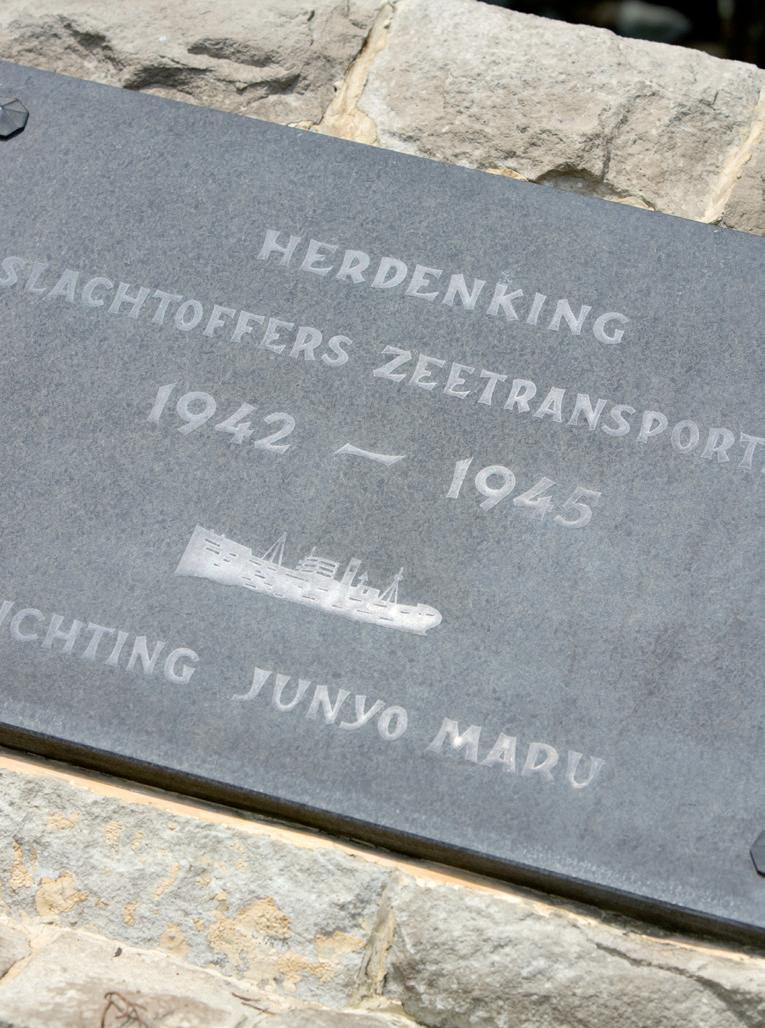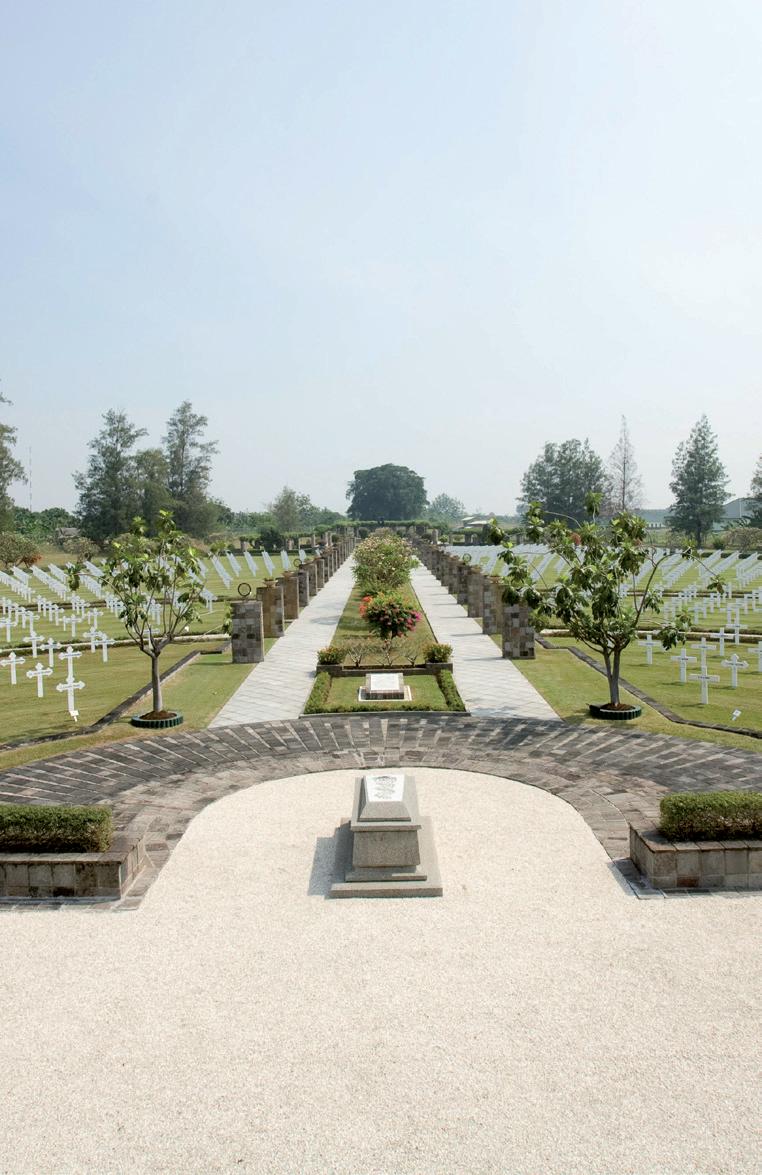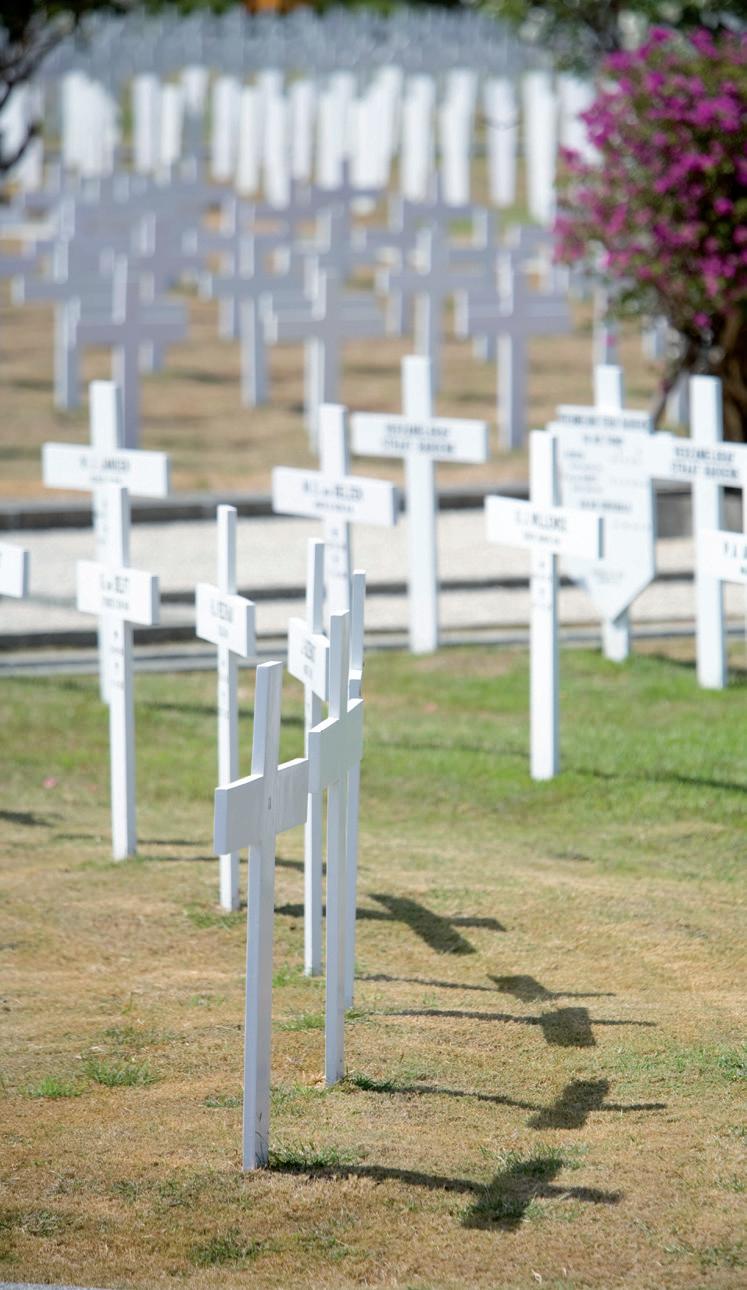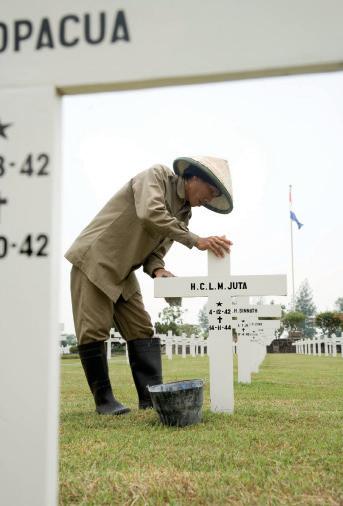Dutch war graves in southeast Asia



In 1942, Indonesia was known as the Dutch East Indies and approximately 300,000 Dutch and Dutch Indonesians or Indos, made their homes in the former colony. In January 1942, the Japanese Imperial Army invaded the Dutch East Indies; their purpose: to gain access to the wealthy natural resources of the country.
During the Japanese occupation, Dutch civilians were imprisoned in internment camps. Prisoners of war were forced into labour, i.e. the Burma Railway. The local Indonesian population suffered from famine and the immense cruelty of the Japanese occupants. The end of the Second World War on 15 August 1945, led to the start of another: The Indonesian War of Independence. Approximately 34,000 Dutch lost their lives in these conflicts.

Almost 25,000 victims are buried in seven war cemeteries across Java. Originally, they were interred in twenty-two war cemeteries across the entire archipelago. In the 1960s, after the sovereignty transfer, the Indonesian government requested that the graves be transferred and concentrated into seven war cemeteries on the island of Java. The Dutch War Cemeteries on Java are maintained by our local branch office in Jakarta.
The war cemeteries in Indonesia are open seven days a week from 07.30am to 5.30pm and are free of charge. Every cemetery has a pendopo where you can take your time to check the burial registers. Our employees are always happy to help you find a specific grave.
 Burma-Siam Cross- Menteng Pulo
The columbarium-Menteng Pulo
Burma-Siam Cross- Menteng Pulo
The columbarium-Menteng Pulo
Menteng Pulo in Jakarta is the final resting place of Dutch and Indonesian casualties of the Second World War. Men, women and children who died in the Japanese camps or during the Bersiap, and Dutch soldiers who died in the subsequent Indonesian War of Independence.
The Columbarium, next to the Simultaan Church, contains 754 urns with the ashes of Dutch prisoners of war who died in Japan.
 The Simultaan Church- Menteng Pulo
The Simultaan Church- Menteng Pulo
‘They shall not grow old,as we that are left grow old’. This is a quote from ‘Poem of the Fallen’, which can be read at Ancol War Cemetery in Jakarta. In this former tropical swamp, the Japanese Imperial Army executed hundreds of men and women, usually by decapitation. They were Dutch and Indonesians who resisted the Japanese occupation. Their bodies were mostly dumped in the swamp. After the war, the victims were exhumed and properly reinterred in the cemetery. Unfortunately, most of the bodies were found in mass graves, which made proper identification impossible. This is why most of the graves remain unnamed to this day. A silent witness to these atrocities is the old ‘hemelboom’ or ‘heaven tree’, which is said to mark the spot where many victims were executed.

The heaven tree also marks the grave of Luchien (Luut) Ubels.A tragic identity mix-up led to her arrest by the Japanese in 1943.They were actually looking for her brother Lambert (Sam) who had got into trouble when he refused to sign a loyalty statement.Luut may have been aware of this mix-up and sacrificed herself for her younger brother.She,too,refused to sign this loyalty statement which led to her execution in September 1943. Luut was almost 24 years old.Sam survived the war.

 The heaven tree-Ancol
Luchien Ubels Ancol War Cemetery
The heaven tree-Ancol
Luchien Ubels Ancol War Cemetery
Pandu War Cemetery in Bandung is the final resting place for soldiers of the Royal Netherlands Indies Army (KNIL) and the Royal Army. The monuments on the cemetery clearly display the connection between Bandung and the KNIL. The cemetery is also the final resting place for civilians who died in Bandung’s internment camps or during the Bersiap.


 KNIL memorial
Tombs of the “Unknown Soldier” and “Unknown Civilian”
Pandu War Cemetery
KNIL memorial
Tombs of the “Unknown Soldier” and “Unknown Civilian”
Pandu War Cemetery
Both civilians and soldiers are buried at Leuwigajah war cemetery in Cimahi near Bandung. During the Japanese occupation, a barren piece of land behind the already existing non-denominational cemetery, was designated as a burial ground for the deceased from the surrounding internment camps. With 5181 graves, Leuwigajah is the largest Dutch war cemetery on Java.

On 18 September 1944,the Japanese cargo ship Junyo Maru was on its way to Pakan Baroe,when it was torpedoed west of Sumatra.On board were 2,300 prisoners of war and 4,200 romusha or local forced labourers.There were no survivors.A monument,dedicated to the casualties of the Junyo Maru,was erected at Leuwigajah war cemetery.
 Leuwigajah War Cemetery Junyo Maru Memorial
Leuwigajah War Cemetery Junyo Maru Memorial
Kalibanteng War Cemetery in Semarang is sometimes referred to as the women’s war cemetery, due to the large number of women and children buried there. They were the casualties of the Japanese internment camps of Mid Java: E.g. Ambarawa, Banjoe Biroe, Lampersari, Halmaheira, Bangkong, Gedangan, and Karangpanas. The memorials to the women and boy internment camps commemorate their stories.

The war cemetery is laid out as an equilateral triangle: the women are mostly buried on the west side and the men on the east side. The graves of the children can be found at the centre.
 Kalibanteng War Cemetery
Memorials to the women and boy internment camps
Kalibanteng War Cemetery
Memorials to the women and boy internment camps
Candi in Semarang is the only military war cemetery in Indonesia. It was the initiative of the first contingent of Dutch troops, part of the Tiger brigade that arrived in Semarang in March 1946. Almost 1,000 soldiers of the Royal Netherlands East Indies Army (KNIL) who died during the Second World War and the subsequent conflicts found their final resting place at Candi War Cemetery.
 Candi War Cemetery
Candi War Cemetery
Kembang Kuning War Cemetery in Surabaya is the final resting place of those who died whilst serving in the Royal Navy, Royal Army and the Royal Netherlands East Indies Army (KNIL). It also contains the graves of civilian casualties who lost their lives in the camps of east Java.

Amongst all the monuments, is the Karel Doorman Memorial. This monument was erected to commemorate the 915 sailors who died during the battle of the Java sea and were declared buried at sea.
 Karel Doorman Memorial
Kembang Kuning War Cemetery
Karel Doorman Memorial
Kembang Kuning War Cemetery
The Japanese occupants forced many prisoners of war to work on the infamous Burma rail road which was a connection between Burma (present-day Myanmar) and Thailand. Many did not survive this ordeal; amongst those were nearly 3,000 Dutch prisoners of war. After the war, their bodies were exhumed and properly reinterred at Chungkai and Kachanaburi war cemeteries in Thailand and Thanbyuzayat War Cemetery in Burma. These war cemeteries are maintained by the Commonwealth War Graves Commission (CWGC), our British partner organisation.

Yet even more Dutch prisoners of war died outside the Dutch East Indies. Most are buried at CWGC war cemeteries in Ambon, Hong Kong and Singapore. Approximately 145 Dutch, Chinese and Indonesians are buried at cemeteries in Australia. Most were merchant seamen.

After the Second World War, another conflict erupted in Korea which was an attempt to stop the division of the country into two separate regions. When the south faced the threat of an invasion, the United Nations decided to send an international military force. Eleven members, including the Netherlands, took part. The casualties of this conflict were buried in the United Nations Memorial Cemetery in Busan. This war cemetery contains the graves of 2,299 victims; this includes 117 Dutch.
Kanchanaburi War Cemetery Burma Rail roadThe Netherlands War Grave Foundation offers pilgrimages to those who wish to visit the grave of a father, mother, brother, sister or other relative one last time. These pilgrimages to Java’s war cemeteries (Jakarta, Bandung, Semarang and Surabaya) or Thailand and Myanmar are offered by the Netherlands War Grave Foundation on a yearly basis. An experienced guide accompanies them to the war cemeteries where, after an oftenemotional remembrance ceremony, they are given the opportunity to lay flowers on the graves of their loved ones.
In addition to the visits to the war cemeteries, sight-seeings to local tourist attractions are offered. We aim to seek a balance between the emotional aspect and the relaxing rewards of this pilgrimage.
These journeys are partly made possible by the Vfund with funds from the National Postcode Lottery and the BankGiro Lottery. We highly recommend your participation.

A flower on a grave is a beautiful symbol. It says “you are not forgotten.” Unfortunately, not everyone is able to do this in person; especially not if the grave is located on the other side of the world. The Netherlands War Grave Foundation offers relatives the opportunity to lay flowers on their behalf on graves in Indonesia, Thailand and Myanmar. This service can be requested through our website or by contacting the Netherlands War Grave Foundation.

 Maintenance work at Kalibanteng
Maintenance work at Kalibanteng
Approximately 180,000 people are registered as casualties of war with the Netherlands War Grave Foundation. They are those who lost their lives as of 9 May 1940, which marks the start of the Second World War for the Netherlands, until today. All these people have a story to tell: some intriguing, some short and simple. The Netherlands War Grave Foundation would like to keep those memories alive. Not only for the present generation, but to all future generations as well.
This is done by gathering, collating and sharing their stories, by registering their names and by maintaining the 50,000 Dutch war graves anywhere in the world. For more information about the foundation and how to support our work, please visit our website www.oorlogsgravenstichting.nl
Would you like to support the work of the Netherlands War Graves Foundation? Please check our website www.oorlogsgravenstichting.nl for details on how to support us.
Contact us:
The Netherlands
Zeestraat 85
2518 AA Den Haag
PO Box 85981
2508 CR Den Haag
Telephone +31(0)70 313 10 80
info@ogs.nl
Indonesia
Jalan Panglima Polim Raya 23
Jakarta
Telephone 00 6221 7207983
info@ogs.or.id
www.oorlogsgravenstichting.nl
ING IBAN: NL98INGB0000401000
ABN AMRO IBAN: NL53ABNA0246244097
Kamer van Koophandel (Chamber of Commerce) Haaglanden 41149180
Follow us on Social Media
erevelden_in_indonesia
www.facebook.com/oorlogsgravenstichting
facebook.com/ereveldmentengpulo
facebook.com/ereveldancol
facebook.com/ereveldpandu
facebook.com/ereveldleuwigajah
facebook.com/ereveldkalibanteng
facebook.com/ereveldcandi
facebook.com/ereveldkembangkuning
Rob
Photography Gieling